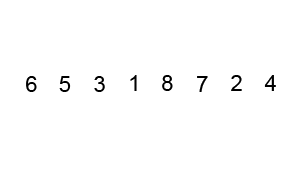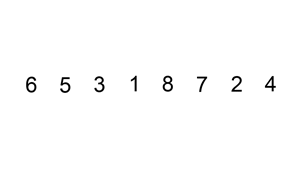Selection Sort, Bubble Sort, and Insertion Sort
Here's an overview of introductory sorting algorithms such as selection sort, bubble sort, and insertion sort.
What is sorting?
Sorting is any process of arranging items systematically. In computer science, sorting algorithms put elements of a list in a certain order.
The most frequently used orders are numerical (according to numbers) and lexicographical (according to letters). Efficient sorting is important for optimizing the efficiency of other algorithms, which require sorted input or the sort of a given input as part of their process.
Formal definition
A list or array is sorted in ascending order if , such that , . Similarly, a list or array is sorted in descending order if , such that , .
Sorting algorithms
Let’s discuss a few sorting algorithms:
Selection sort algorithm
This algorithm works by repeatedly finding the minimum element in the list and placing it at the beginning. This way, the algorithm maintains two lists:
- the sublist of already-sorted elements, which is filled from left to right
- the sublist of the remaining unsorted elements that need to be sorted
In other words, this algorithm works by iterating over the list and swapping each element with the minimum (or maximum) element found in the unsorted list with that in the sorted list.
Look at the illustration for a clearer picture.
Also, here is the code:
Time complexity
The time complexity of this code is in because finding a minimum number in the list requires iterating over the entire list for each element of the given list. The quadratic time complexity makes it impractical for large inputs.
Bubble sort algorithm
This is another famous sorting algorithm also known as ‘sinking sort’. It works by comparing adjacent pairs of elements and swapping them if they are in the wrong order. This is repeated until the list is sorted.
Think of it this way: a bubble passes over the list, ‘catches’ the maximum/minimum element, and brings it over to the right side.
Time complexity
The time complexity of this code is . Again, this algorithm is not very efficient.
Insertion sort
Insertion sort is another famous sorting algorithm and works the way you would naturally sort in real life.
It iterates over the given list, figures out what the correct position of every element is, and inserts it there.
Time complexity
The algorithm is , which, again, makes it a poor choice for large input sizes. However, notice that the complexity is actually only when the input list is sorted in reverse. So, the ‘best-case’ complexity (when the list is sorted in the correct order) is .
Space complexity
Also, note that all of these algorithms are in-place, hence their space complexity is in .


